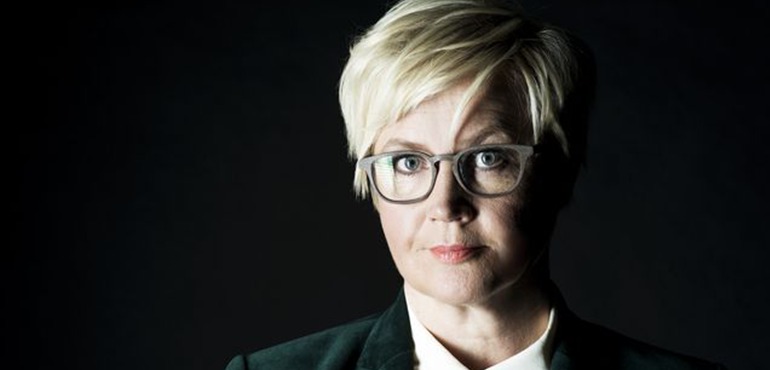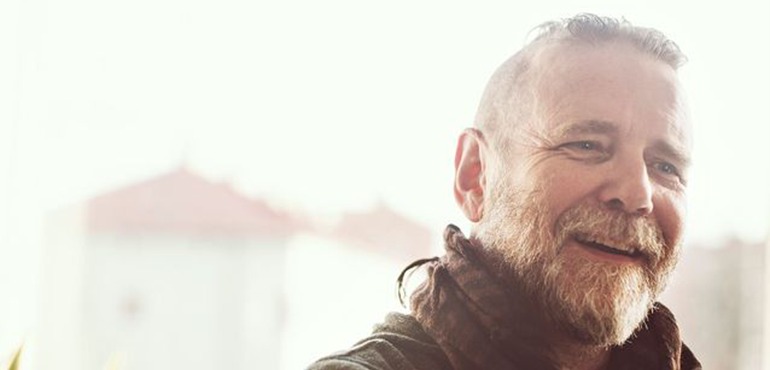
Social media changed the rules in the newsroom
Kreeta Karvala, Iltalehti’s editorial writer, is a long-standing news professional. She remembers the moment when she realised that the way to communicate news had entered a new era.
It was when the Indian Ocean tsunami occurred in 2004. At the time, Kreeta Karvala was working as a news editor at the Finnish Broadcasting Company Yle and had a front-row seat in seeing how it was an online community of Finnish divers who became one of the most important and reliable sources to explain tsunamis.
The tsunami made the traditional media recognise that people who were networked through internet communities – however crude – were able to beat them in speed and accuracy of acquiring news. Karvala thinks that the tsunami was also a watershed; the decade that followed it has witnessed a completely new way of consuming and producing news. Media have entered a more interactive era because new social media services have enabled people to reach even the traditional media more easily, and they have brought up new sources for news.
According to Karvala and another long-time media professional, Eero Leppänen, now an online news producer at Lapin Kansa, the changes seen in the past decade are apparent in everyday newsroom operations and in news consumption.
In social media, a news consumer can turn into an active news producer in an instant.
Karvala: “Social media platforms have become a huge source pool for newsrooms, and they provide us with news tips as well as photos and videos from the public. Journalists can also use social media for finding interviewees and information.”
Leppänen: “There are cases where social media can blur the lines between a reader and a journalist almost completely. But there is still a long way to go. I think it’s the attitudes among us journalists that are the biggest hindrance.”
“When the reader becomes the journalist, even the traditional media may adapt to new methods. We might be forced to do it.”
Iltalehti”s editorial writer Kreeta Karvala hopes that in the era of social media journalist won”t forget the tried and tested methods of acquiring news.
Social media places new demands on people’s media literacy.
Karvala: “A significant part of the traditional media’s online traffic comes through their social media platforms. That is why newsrooms are also eager to share content in various social media services. Not all news content is shared there, though, since not all topics are interesting in social media. This in turn will make people think that the range of news offered by the media is quite limited.”
“I don’t think that people really understand the fact that services such as Facebook do not necessarily provide all news and other updates that they might wish to receive. They don’t realise that commercial social media services follow their own logic as to which contents they highlight. It’s business that shapes consumers’ worldview. This is the reason I’d like to encourage people also to continue checking the news on the media’s actual websites.”
Leppänen: “It seems that people’s media literacy has deteriorated for some reason, and many people can’t tell real news from the fake news that spread false information and hate speech. I’m sure that the most popular sites in Finland that offer fake news receive 90% of their visitors through social media. For this reason, the traditional media must be able to reach bigger audiences through social media so that they can counterbalance the content on these sites. It is the duty of the traditional media to share accurate and confirmed information even in social media.”

Lapin Kansa’s online news producer Eero Leppänen is worried that people’s media literacy has deteriorated. Many people can’t tell real news from the fake ones.
The traditional media is still looking for the right procedures to follow in social media.
Karvala: “As a journalist I’d like to make sure that the tried and tested methods of acquiring news are not forgotten. There is exclusive information in the world that cannot be found on Twitter. After all, politicians and opinion leaders don’t share important news on Twitter or their blogs, but they use social media to communicate their own opinions and to exaggerate and stir debate. For journalists to grasp the bigger news and what is really happening between people, they still must know people, talk to them and rely on the good old-fashioned journalistic work. Social media trends can’t be the only source of news.”
Leppänen: “We, the traditional media, should be much more visible in social media. We should also post blog-type material on our news sites in order to explain how we compile news stories and why we choose certain perspectives. A digital platform offers huge opportunities for this, and it’s our only hope. We can no longer think in the way we have for the past few hundred years, i.e. that we are journalists and our job is to interpret the world around us to other people. We should dare to join in debates more proactively.”
“The media could turn their own websites into social media. The most debate-provoking stories on the Lapin Kansa website attract more than a hundred comments. I don’t think that the traditional media recognise the value of these discussions and comments. Journalists don’t join in the discussions that are carried out under their online stories. This is a missed opportunity.”
Lapin Kansa goes social
Eero Leppänen practices what he preaches. For years now he has been involved in developing Lapin Kansa”s presence in social media through his own company. Things accelerated a couple of years ago when he started working as an online news producer at Lapin Kansa. The results have spoken for themselves: over the past eight months, 21% of visits to the Lapin Kansa website have come through social media services, mainly through Facebook. This is twice as many as the normal number of visits that regional papers in Finland have through social media.
The recipe for Lapin Kansa”s success in social media is actually quite simple. The staff posts a dozen or so updates on Facebook every day that focus on its own news. They have never tried any campaigns or competitions.
“We post updates that work specifically on Facebook. We don”t need to act like a civil servant or journalist there,” says Eero Leppänen.
In practice, working on Facebook”s terms may mean, for example, that Lapin Kansa”s posts concerning a news story sympathise with readers” emotions and the paper may relax the rules of objectivity normally expected of news media. The paper can encourage participation on Facebook by asking questions or provoking reactions by using exaggeration, humour or self-deprecation.
As a result of these methods, the most shared Lapin Kansa posts have been shared many times the number of people, 11,000, who like the page. The best weeks have seen the paper”s Facebook posts reach more than 200,000 readers through social media – more than twice the number of readers that the paper normally reaches through its website.